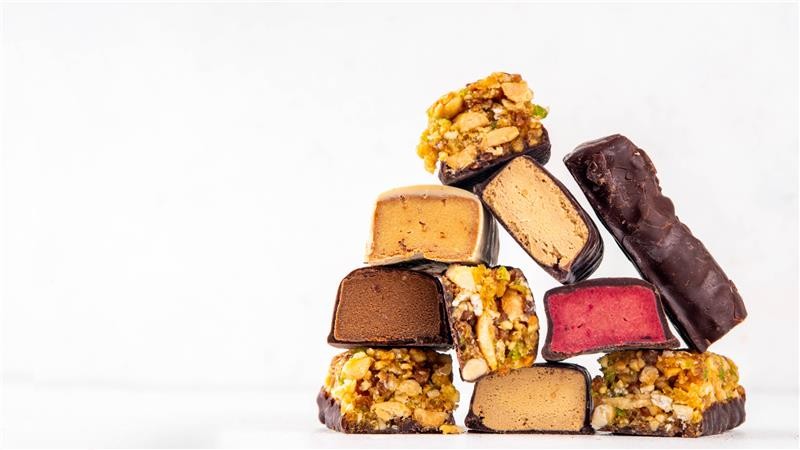Recently, the confectionery space has seen an influx of “functional chocolate” products that are infused with everything from probiotics to mushrooms.
Four Sigmatic partnered with Honey Mama’s to launch Focus Fudge, a limited-edition chocolate bar made with raw honey, coconut, cocoa, and lion’s mane mushroom extract that’s intended to enhance mental clarity, concentration, and mood.
In addition, nutraceutical innovator DolCas Biotech, LLC, announced that it successfully infused beneficial marine collagen tripeptides into a chocolate bar, with each square containing one gram of Morikol, an ultra-low-molecular weight of fish collagen tripeptide that reportedly has clinically validated effectiveness at a uniquely minimal dose.
Let’s explore the origins of the functional chocolate trend – and why both consumers and companies can’t seem to get enough of it.
A Rich History
“Functional chocolate is not a new idea. What feels particularly notable now is the timing of its resurgence, which may signal a deeper and less conscious driver: economic pressure,” said Bingxuan Guo, assistant professor of marketing at Wake Forest University School of Business.
“Historically, we’ve seen similar patterns. During World War II, chocolate was reformulated into fortified ration bars (e.g., Hershey’s Ration-D), designed not as candy but as energy fuel for soldiers. In the aftermath of the 2008 global financial crisis, consumers turned toward functional snacks and drinks promising health benefits – products that felt justifiable under financial and emotional strain,” Guo told FI.
“Periods of economic uncertainty often bring a dual burden: budget constraints and psychological stress. Consumers become more value-conscious, and hedonic purchases risk being seen as non-essential. However, when these products are enhanced with functional features, they gain a sense of rational legitimacy. The thinking becomes, ‘I’m not just buying chocolate for pleasure – I’m also supporting my health.’ This layered functionality transforms a discretionary treat into a more sensible, even proactive, choice,” added Guo.
Motivations for Manufacturers
Functional chocolate is popular with F&B companies as well – and for good reason.
“This move to supplement chocolate provides both higher margin and meaning for companies. This gives products a higher consumer ROI and will likely protect chocolate companies from rising cocoa costs,” said Kevin Ryan, MS, PhD, a food innovation strategist with 20 years of experience leading product strategy at General Mills, Amazon, and others.
“Functional chocolate segments the day, increasing usage occasions. You may not have thought to have a piece of chocolate right before bed before or when you need to focus, but if it helps, now you do,” Ryan told FI.
Ryan says companies have been stacking additional margin-protecting attributes on top of “functional” as well, such as “organic,” “free-trade,” and “single-source.” He predicts we’ll start seeing even more cost-savings efforts (framed as innovation) bolted onto functionality in the near future, including the use of fermented and toasted grains in chocolate-like substitutes (see Aeon’s Zero Chocolate bar and Fazer’s new Raspberry Dream bars), as well as a rise in products incorporating upcycled cacao – a strategy leveraged by Blue Stripes.
So, what are some of the challenges associated with functional chocolate? And is it as effective as advertised?
Balancing Flavor and Function
“Adding functional ingredients isn’t always seamless – some can bring off flavors that don’t exactly scream ‘indulgent treat.’ Interestingly, we’re seeing chocolate makers get creative here,” said Rebecca Replogle, Ph.D. Nutrition Science Lead at Novonesis.
“There’s been an uptick in the variety of flavors used in chocolate, including spicier and savory notes, which can help mask or balance out any less pleasant flavors introduced by functional ingredients. This trend is not only helping maintain the enjoyable taste of chocolate but also opening the door to more adventurous and complex flavor profiles,” Replogle told FI.
However, flavor is merely one piece of the functional chocolate bar, and some health experts aren’t so sure that these products can live up to their hype.
“Firstly, whether it’s lion’s mane, turmeric, or collagen, the doses that have been shown to have benefits in clinical studies are typically much larger, compared to the tiny ones that are sprinkled into most of these chocolate bars,” advised Dr. Nicholas Dragolea, a GP at London-based My Longevity Centre.
“These functional bars are therefore more about the ‘healthy’ headline rather than hard science and health benefits. Consumers should remember that if they were indeed a beneficial health supplement, then they would have to be labelled as one, and functional chocolate doesn’t have to carry supplement related warnings at present,” Dragolea told FI.
The Food Institute Podcast
It’s a big world out there – what trends are percolating on the global scene? JP Hartmann, director of Anuga, joined The Food Institute Podcast to discuss the intersection of U.S. and international trends and how the Anuga show is one not to miss.












